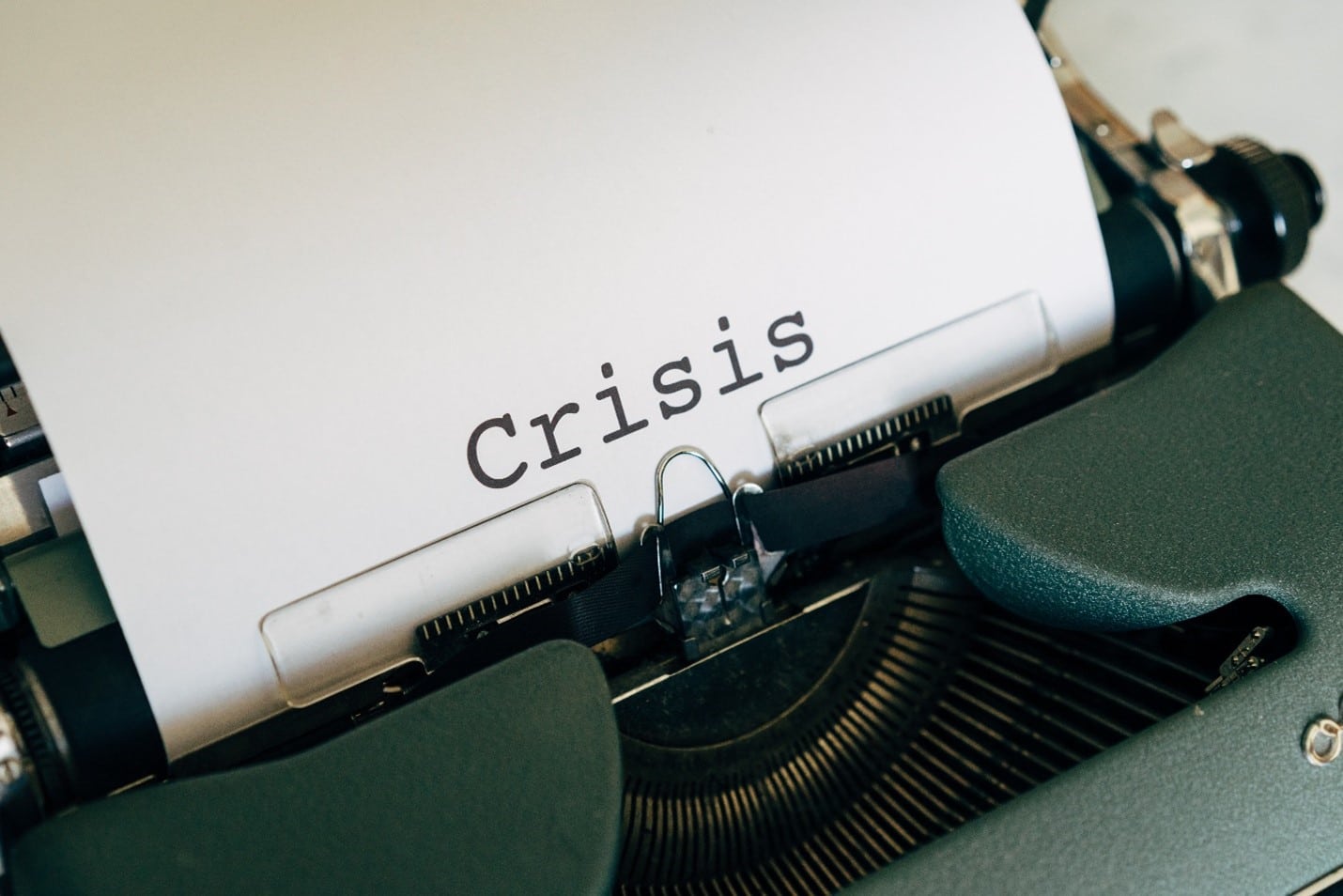
How an Internal Communications Plan Can Improve Employee Retention
HOW AN INTERNAL COMMUNICATIONS PLAN CAN IMPROVE EMPLOYEE RETENTION
“Now Hiring!” “Join Our Team!” The signs are everywhere–from fast food joints and discount retailers to universities and tech firms.
Job boards like Indeed are filled with listings seeking professionals and specialists in fields that never expected to have so many vacancies, certainly not all at once. Even when posts are filled, turnover is high.
In the face of such a volatile job market, employers may be finding that their previous retention strategies no longer seem sufficient or are out of touch with what employees now need and value.
So, what can bosses do?
Are there ways to keep trained workers and highly valued talent from leaving, even if increasing salaries is not an option?
A Communications Solution
One solution for creating deeper employee engagement–and showing them the advantages of staying with a company–is to develop an Internal Communications Plan (ICP) or revamp an existing one.
Internal Communications Plans are blueprints or guides that set business communications goals and outline the tasks and schedules needed to implement them.
The typical ICP contains a variety ofinternal communication types such as:
- Leadership and Top-down (Vertical Communication)
- Change
- Crisis Management
- Information Sharing
- Bottom-up and Two-way
- Peer (Horizontal Communication)
- Corporate Culture
- Campaigns
If high turnover is an issue, an ICP can include a focused Retention Campaign and Standard Operating Procedures (SOPs) to ease the transition for those taking on more responsibilities and new hires.
What Employees Say They Want
Believe it or not, wanting more money is not the only motivating factor driving resignations. Better internal communications can highlight other benefits workers say they need to stay on the job.
But what is it that employees say they want?
1. Opportunities for Internal Mobility.
According to the Lever Company’s “2022 Great Resignation: The State of Internal Mobility and Employee Retention Report,” many workers do want to stay with their current company; they just don’t want to stay in their current role.

A staggering 61% of those surveyed said they would start job hunting if their boss did not let them change positions. And almost a third, at 31%, said they would even accept a pay cut in order to do it!
Rather than watch a parade of people coming in to interview for open positions, many current employees want the chance to demonstrate their interest in those jobs, too.
They want to upskill and move up the food chain or make a lateral move into another department.
An ICP will tell existing employees what those opportunities are and how to apply. This information won’t just be on the “careers” or “search jobs” sections of the corporate website or job boards existing employees aren’t checking.
Instead, it will be in regularly scheduled “new opportunities” or “apply now” bulletins.
Want-ad sections and training opportunity announcements that include links to descriptions and application deadlines can be included in corporate newsletters, sent via intra-net or other in-house messaging systems.
They can be made available to all employees or sent by targeted emails to those who have indicated an interest in upskilling or changing their role.
2. Bosses Who Are Flexible About Flexibility
Not surprisingly, over a third of employees also say they want their bosses to make flexibility a priority. This may include rethinking the traditional work week, facilitating remote work, and/or more time off.
A Retention Campaign that communicates an openness to change and trying out different strategies can be a powerful tool. It can help employees see the advantages they already have, and how much their employment is worth–outside of salary in terms of benefits.
They can also be reminded how their years of dedicated service translates into rewards.
For example, many companies offer generous benefits packages that demonstrate their commitment to their employees. But sometimes these are written in such a way that the average worker has trouble deciphering the material or is put off by the sheer volume of text.
A Retention Campaign can include an employee survey to gauge understanding or identify gaps in their knowledge about these benefits.
Based on this feedback, printed brochures or web content on benefits can be revised to simplify and clarify the material, using language and company or industry jargon that is familiar and accessible.
A Retention Campaign can also include strategies for reconnecting with former workers who left seeking a better work/life balance. Workhuman.com says such “boomerang employees” are becoming increasingly important for recruitment.
Unfortunately, many companies lose track of them. Having a database of potential returnees, or even keeping them on the list for corporate newsletters and recruiting events, can keep them in the loop.
A schedule can be created to determine how often emails or other notifications should be shared with both current and former employees. These would include updates to working hours and flex time.
In addition, stories and images can be created to show how individual employees, or even entire teams and departments, are able to take time off to meet family responsibilities. These profiles can underscore company responsiveness to the growing need for a better balance and between career and personal commitments.
Employees will see they do not have to leave but can find what they value where they are now.
3. A Company that Shares Their Personal Values
Ethical corporate behavior is particularly important to Gen Z, but it is something that is beginning to cut across all age cohorts.
According to a recent article by Apollo Technical Engineered Solutions, “New generations are increasingly focused on advocating for ethical practices, accountability and giving back to society…statistically up to 79% of job candidates would decline a lucrative job offer if a company is unethical or does not uphold its values.”
With statistics like these, it is crucial for any Internal Communications Plan being developed right now to show how the organization is being socially responsible and environmentally aware.
Regular examples of volunteerism at local charities (not just during the holidays) and donations of much needed supplies for worthy causes make wonderful human-interest stories and newsletter highlights.
Such investments in social and environmental initiatives and the promotion of philanthropy tell employees their employer gives back to the community and cares about the future of the planet.

4. Belonging and Purpose
It is much harder for an employee to leave a company where they feel a sense of belonging. Everyone also wants to feel their work has meaning, no matter what level their job post.
Keeping employees apprised of key information or pending changes is as important as ever. But with so many remote and flex time workers, and the evolving nature of “the office” and the traditional workweek, community building efforts are no longer merely welcome; they may be crucial to mitigating resignations.
Celebrating and recognizing employee or team achievements and making connections between the history of the company and its present-day legacy and future goals are just some of the Internal Communication Strategies that can foster a strong sense of community and group identity.
Short stories and anecdotes, archival photos, and even video clips detailing the company’s history are often shared with new hires. But posting these on social media or newsletters can enhance existing employees’ sense of purpose and demonstrate how they are carrying on a corporate legacy.
Companies can even take it a step further and hire a writing agency to have their history— including fun stories and images— documented in a company history book.
But this needs to feel genuine and relevant, not just display venerable relics or charismatic leaders from the past.
One way to achieve this is by encouraging employees share their own positive or humorous memories of when they first joined the company, or significant business events and corporate milestones.
Personal reflections can give new dimension to collective experience and underscore a larger sense of belonging and purpose.
Better Internal Communication Can Help
If it seems like workers are expecting a lot to stay on the job, they are. But increasing executive connectedness with employees at all levels, locations, and time zones can remind people why they joined the organization in the first place and renew their sense of pride in the work they do.
Strategic Internal Communications Plans that focus on meeting communications goals, improving retention, and keeping employees engaged and proud of where they work can be designed for companies that:
- Never had one before or whose ICP was ad hoc.
- Are seeking to build on and reinvigorate previous strategies.
- Need detailed instructions for continuity and upkeep.
What Should an Internal Communications Plan Include?
Strategic Internal Communications Planning should feature:
- The Company Mission
- Corporate Goals
- Standard Operation Procedures and Details of Key Processes
- Employee Recognition and Rewards
- Ethical Practices and Community Outreach
- Strategies for Maximum Employee Engagement
- Feed-back Mechanisms
Useful Tools
While some organizations keep things simple, using mainly WhatsApp for communications, there are a variety of collaborative, easy-to-use platforms from which to launch a Retention Campaign.

Microsoft Share Point is particularly suited for use by different departments and sub-teams. There is also Microsoft Teams, a program that is both cost effective and ties in with other Microsoft products.
In addition, Webex can facilitate meetings with scattered work forces.
And the tried-and-true Skype is a still favorite means for connecting remote workers and providing for internal chats.
Even with newer technologies, more traditional methods like regular email communications and well-designed company newsletters (both print and digital) are hard to beat for “feel good” information sharing.
This can include sharing articles on corporate activities, vacancies, upcoming training opportunities, profiles of employees and executives, community outreach activities, team competitions, and team-building events.
The challenge with email blasts and newsletters, of course, is getting someone to research and write the articles, edit and proofread them, upload photos, and circulate to everyone–and do this on a regular basis.
Who Can Help?
Businesses that need extra hands right now might consider hiring a writing agency to create their Internal Communications Plan.
Writing agency personnel can ease the burden of executive communication (which can be upwards of 400 documents a year) by drafting share holder letters, speeches, employee announcements, and more.
Professional writers have the expertise to create style guides for future internal employee communications. They can outline branding strategies for uniform visuals and stylistic content across all communication platforms.
Social media policies may be long overdue for an overhaul, or need basic guidelines for consistent, approved, and appropriate messaging from employees at all levels.
During the current wave of resignation or unusually high turnover, professional writers can put in the hours needed to craft detailed employee manuals on procedures and policies.
Wintress Odom, founder of The Writers for Hire, says almost every one of her clients is dealing with high turnover issues right now. Her advice during the Great Resignation? “Try not to panic but try to see things from the departing employee’s perspective. You may lose some good people, but you will also bring on other talent.”
In this time of transition, Odom says it is imperative to get help writing Standard Operating Procedures and documenting processes, especially if seasoned employees with key knowledge are on their way out.
She stresses that hiring a writing agency can be a short- or long-term solution: “If the PR or Marketing Departments are understaffed, management can get us to do a campaign and the schedule,” says Odom.
This could mean a continuing collaboration with the client, well after the Internal Communication Plan is designed, ensuring that the deliverables developed meet their deadlines and the ICP stays on track.
Now is a Time to Focus Inward
PR and marketing departments may be doing a fine job of showcasing the attributes of a business to the wider community, even the global marketplace.
But is the same effort being made internally? Are employees aware of upcoming opportunities? Does the corporate history feel relevant? Do scattered workers feel connected and included?
Most of all: Are there consistent strategies for reaching employees who may be thinking about quitting?
If not, an Internal Communications Plan adapted to the changing job market could be in order to help keep people on the job.
While sharing corporate values, the Internal Communications Plan can help employees feel valued, too.
Related Content
- 0 Comment
Subscribe to Newsletter
- How Can SharePoint Be Used To Organize and Disseminate SOPs?
- Planning the Perfect Genealogy Research Trip: A Step-by-Step Guide
- From Silly to Awesome: How Words Change Meaning Over Time
- The Psychology of Font Choice: How Typography Impacts Content Engagement
- How to Distribute SOPs for Maximum Usability





